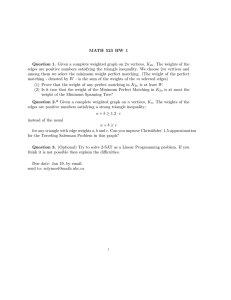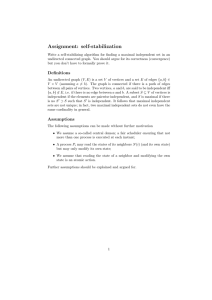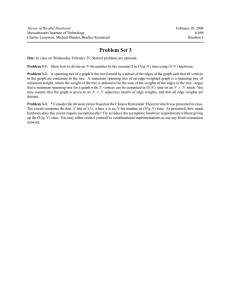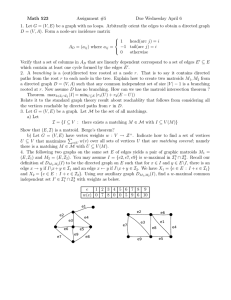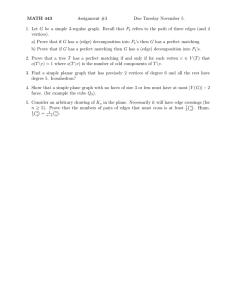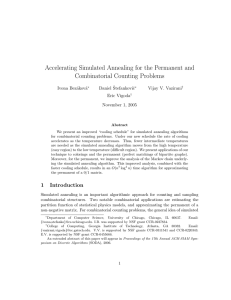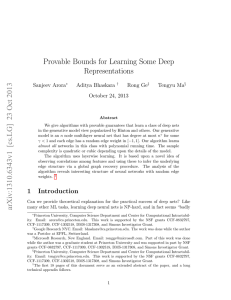Document 13546673
advertisement
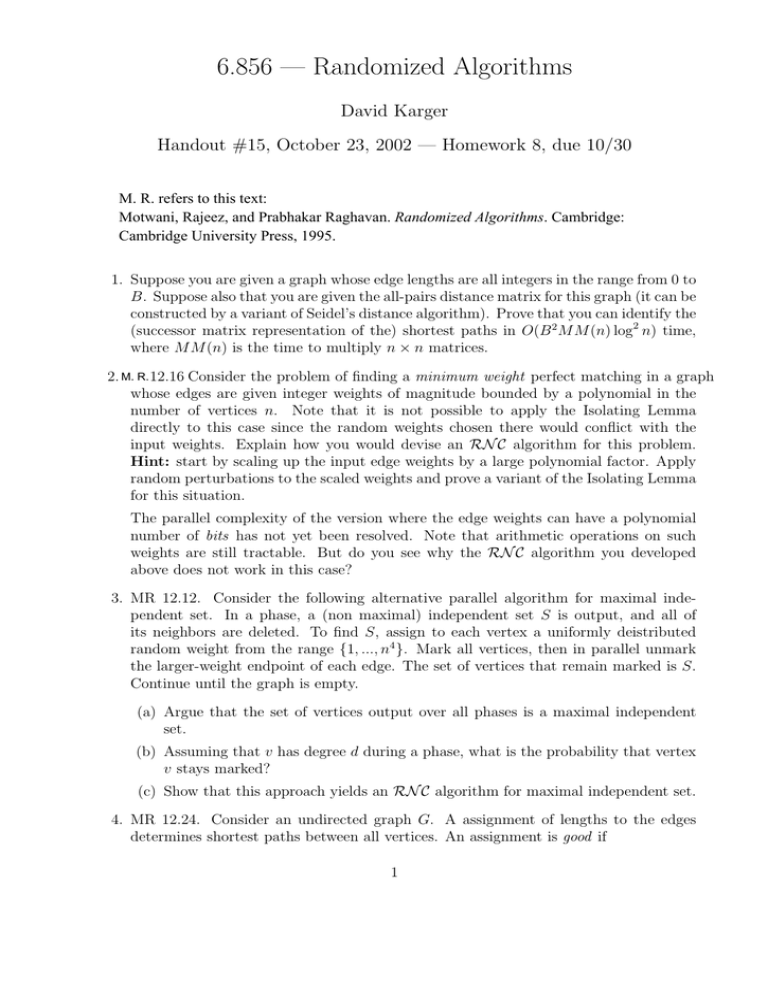
6.856 — Randomized Algorithms
David Karger
Handout #15, October 23, 2002 — Homework 8, due 10/30
M. R. refers to this text:
Motwani, Rajeez, and Prabhakar Raghavan. Randomized Algorithms. Cambridge:
Cambridge University Press, 1995.
1. Suppose you are given a graph whose edge lengths are all integers in the range from 0 to
B. Suppose also that you are given the all-pairs distance matrix for this graph (it can be
constructed by a variant of Seidel’s distance algorithm). Prove that you can identify the
(successor matrix representation of the) shortest paths in O(B 2 M M (n) log2 n) time,
where M M (n) is the time to multiply n × n matrices.
2. M. R. 12.16 Consider the problem of finding a minimum weight perfect matching in a graph
whose edges are given integer weights of magnitude bounded by a polynomial in the
number of vertices n. Note that it is not possible to apply the Isolating Lemma
directly to this case since the random weights chosen there would conflict with the
input weights. Explain how you would devise an RN C algorithm for this problem.
Hint: start by scaling up the input edge weights by a large polynomial factor. Apply
random perturbations to the scaled weights and prove a variant of the Isolating Lemma
for this situation.
The parallel complexity of the version where the edge weights can have a polynomial
number of bits has not yet been resolved. Note that arithmetic operations on such
weights are still tractable. But do you see why the RN C algorithm you developed
above does not work in this case?
3. MR 12.12. Consider the following alternative parallel algorithm for maximal inde­
pendent set. In a phase, a (non maximal) independent set S is output, and all of
its neighbors are deleted. To find S, assign to each vertex a uniformly deistributed
random weight from the range {1, ..., n4 }. Mark all vertices, then in parallel unmark
the larger-weight endpoint of each edge. The set of vertices that remain marked is S.
Continue until the graph is empty.
(a) Argue that the set of vertices output over all phases is a maximal independent
set.
(b) Assuming that v has degree d during a phase, what is the probability that vertex
v stays marked?
(c) Show that this approach yields an RN C algorithm for maximal independent set.
4. MR 12.24. Consider an undirected graph G. A assignment of lengths to the edges
determines shortest paths between all vertices. An assignment is good if
1
• All shortest paths are unique, and
• All pairwise distances in the graph are distinct
Find the smallest W you can for which there exists a good assignment of weights all
drawn from the range {0, . . . , W }.
5. Optional. Devise an RN C algorithm for finding a maximum matching (i.e., most
possible edges) in a graph that may not have a perfect matching. Hint: use the
min-weight perfect matching algorithm above as a “black box” by making nonexistent
edges very expensive.
6. Optional. In the exact matching problem, a bipartite graph is given with a subset of
the edges colored red, along with an integer k. The goal is to find a perfect matching
with exactly k red edges. Devise an RN C algorithm for this problem using a (non­
trivial) application of the Isolating Lemma. Note that this problem is not known to
be solvable in P.
2
